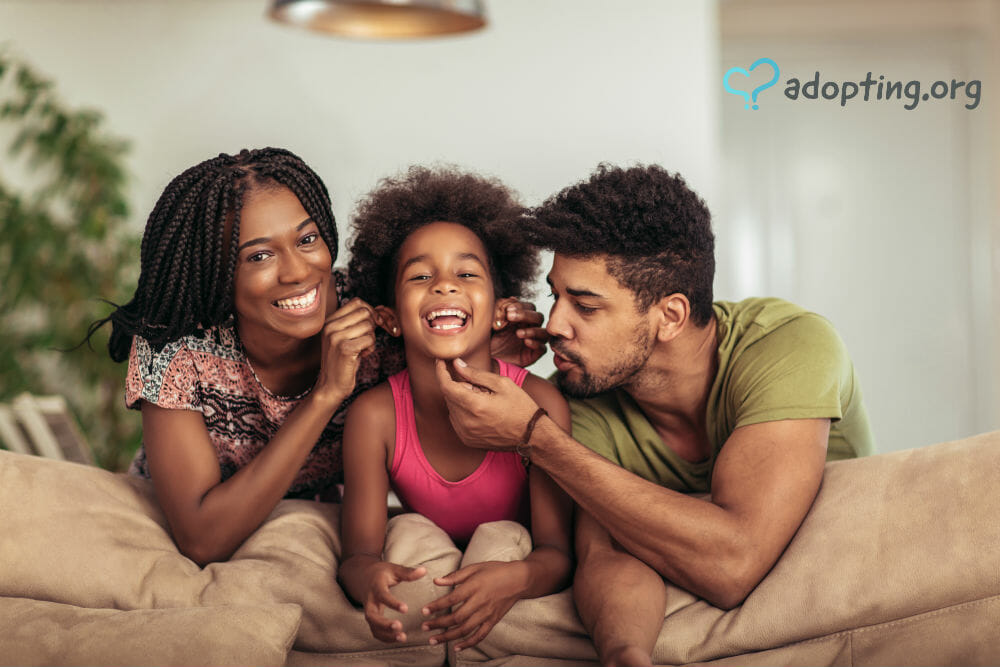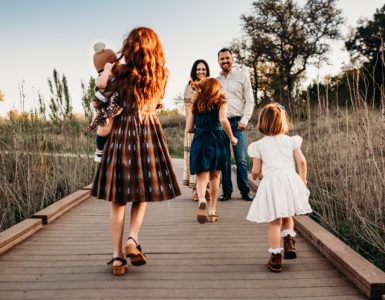
If you are an American considering adoption, you are not alone. In fact, studies show that 81.5 million Americans have considered adoption at some point, but only 2% of the population has actually adopted.
Of the 135,000 U.S. adoptions that occur each year that are not stepparent adoptions, 59% are through the foster care system, 26% are from other countries, and 15% are American babies relinquished voluntarily.
The average age for adoptive mothers is 35 years old, and the average age for adoptive fathers is 43.
Transracial adoptive families are now much more common than they were in the past. In fact, 90% of Asian adoptees, 64% of multiracial adoptees, 62% of hispanic adoptees, and 55% of African American adoptees are being raised by a different race other than themselves.
How can you pursue a U.S. adoption? Here are some places to start.
Foster Care U.S. Adoption
Adoption through foster care is popular in the United States because of its low cost. In fact, the total expense of adopting through foster care is less than $3,000, a sum that is reimbursed to the adopting family in many states.
Foster care adoption is also a wonderful way to provide a home for a child who would have little opportunity in life otherwise. Studies show that 20% of the children who age out of the foster care system will become homeless instantly. Only half of them will be employed by the time they are 24, and 7 out of 10 girls who age out will become pregnant by the age of 21.
The greatest need for adoption from foster care is for children ages 3-8. In fact, there are currently 100,000 children whose biological parents’ rights have already been terminated and are legally available for adoption. Some are older, some are a part of a racial or ethnic minority group, and some are a part of a sibling group that cannot be separated.
Many states are moving toward a dual-licensing system in which parents can become licensed to foster parent and adopt at the same time. This step acknowledges that many children adopted through foster care are adopted by their foster parents.
You will also have to complete some pre-adoptive training in which you will learn about dealing positively with children who have experienced trauma, neglect, and substance abuse at a young age. Logic, patience, and creative play can all help to strengthen your bond with your child and help her deal with emotions in a constructive way.
Once you have become licensed, you can register on the U.S. photolistings website and state websites and begin asking for additional information about a child or children you may be interested in adopting. Remember that you may not be the only one interested in some cases!
If you and the caseworker decide that you are the best fit for a particular child or children, a match is made and visits begin. You may meet with the child’s teacher or social workers first to get additional helpful information. Take what you learn seriously, but remember that most children change dramatically once they are brought into a loving, nurturing environment.
Adoption usually occurs within nine months after your child comes to live with you. There is a brief hearing with a judge who files the adoption papers.
Agency U.S. Adoption
Many U.S. families prefer agency adoption because it one of the few ways to adopt an infant within the country. Adoption agencies “hold your hand” throughout the adoption process, locating birth mothers, and highlighting paperwork along the way.
The cost of agency adoption is usually somewhere between $20,000 and $30,000, including agency fees, legal fees, and birth mother expenses. The national adoption tax credit of $13,810 can help you to recoup money spent on adoption-related expenses. This is money that you will not have to pay in income taxes for up to five years after the adoption is finalized. You can also apply for adoption grants and ask your employer about assistance.
When you complete an home study for agency adoption, you may be asked to supply non-family references, a physical examination, a fingerprint clearance, and proof of income. There will also be a home inspection and interviews.
Most agencies also require a photo album or online photo gallery of your family’s interests, pets, and home that birth mothers can look at when selecting a family for their babies. If your family is chosen, you will be able to meet your child when he or she is born in the hospital. The adoption is finalized at a court hearing within a year after the child’s birth.
Private U.S. Adoption
Some U.S. families prefer to work directly with a lawyer when making an adoption plan. They prefer the private route because there are fewer requirements for the home study and no waiting lists. Private adoptions also allow for the possibility of a closed adoption, in which there is no contact with the birth mother after the baby is born. Most agencies require at least some degree of communication after the adoption is finalized.
Families adopting through a lawyer need to complete a home study with a licensed caseworker. They may be more involved in the process of locating a birth mother, such as placing ads in papers. The national adoption tax credit also applies toward a private adoption which is usually somewhere between $15,000 and $25,000.
U.S. adoptions happen every day, and they are completing families throughout the country. They are a wonderful opportunity to give a child hope for the future.
Are you ready to pursue adoption? Visit Adoption.org or call 1-800-ADOPT-98 to connect with compassionate, nonjudgmental adoption specialists who can help you get started on the journey of a lifetime.



